京剧文化之旅|塑造人物、传递情绪,发丝都在唱戏的京剧发型
京剧文化之旅|塑造人物、传递情绪,发丝都在唱戏的京剧发型
A Glimpse of Beijing Opera Culture | Hairstyles in Beijing Opera: Enhancing Characterization and Expressing Emotions
有位老专家曾提到“如果京剧失去了舞美的装扮,那它只是清唱”。无论是怎样的表演形式,对于观众而言最重要的就是视觉、听觉、感觉综合所带来的体验,而京剧人物造型就是最直接的视觉美。
A senior expert once said, “Beijing Opera would only an art of singing without makeups and choreography.” Indeed, for any kind of performing arts, the most important to the audience is an experience combining visual, audio, and emotional aesthetics. For Beijing Opera, the most immediate visual impact comes from makeup designs.
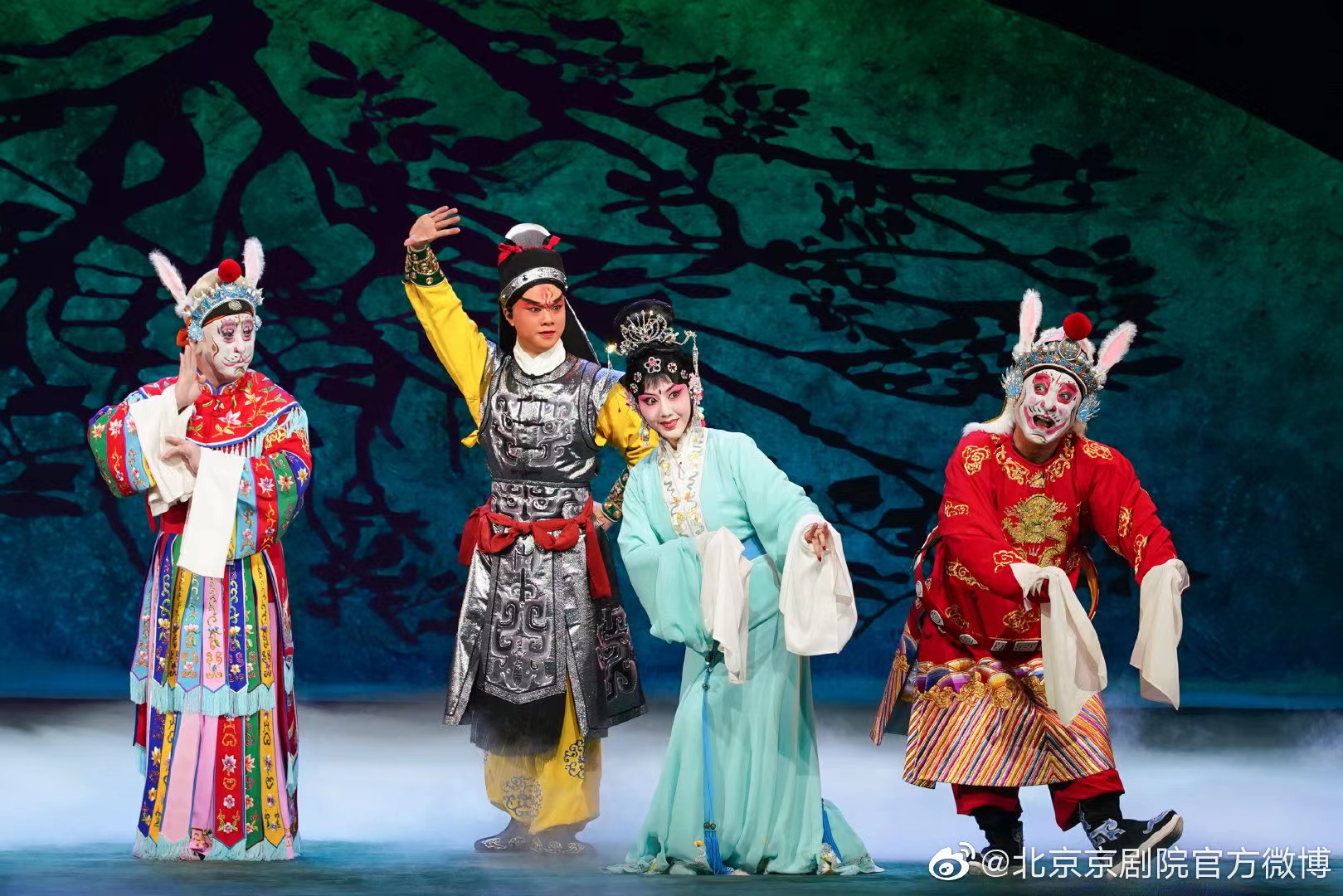
《嫦娥奔月》剧照
A still from Chang’e Flying to the Moon
在京剧舞台表现的过程中,演员造型是非常重要的,除用以刻画人物外,还是辅助、加强表演的有力手段。当京剧演员搭配正确的造型效果,能让观众更加了解这个剧情的时代背景和人物性格特点,加深对京剧艺术的了解并对京剧产生兴趣。
Makeup styling is crucial for artists in Beijing Opera performances. In addition to creating characters, it is also a useful tool to supplement and enhance performance. Proper dressing and makeup help the audience better understand the historical background of the play and the personalities of characters, inspiring their understanding of and interest in Beijing Opera.
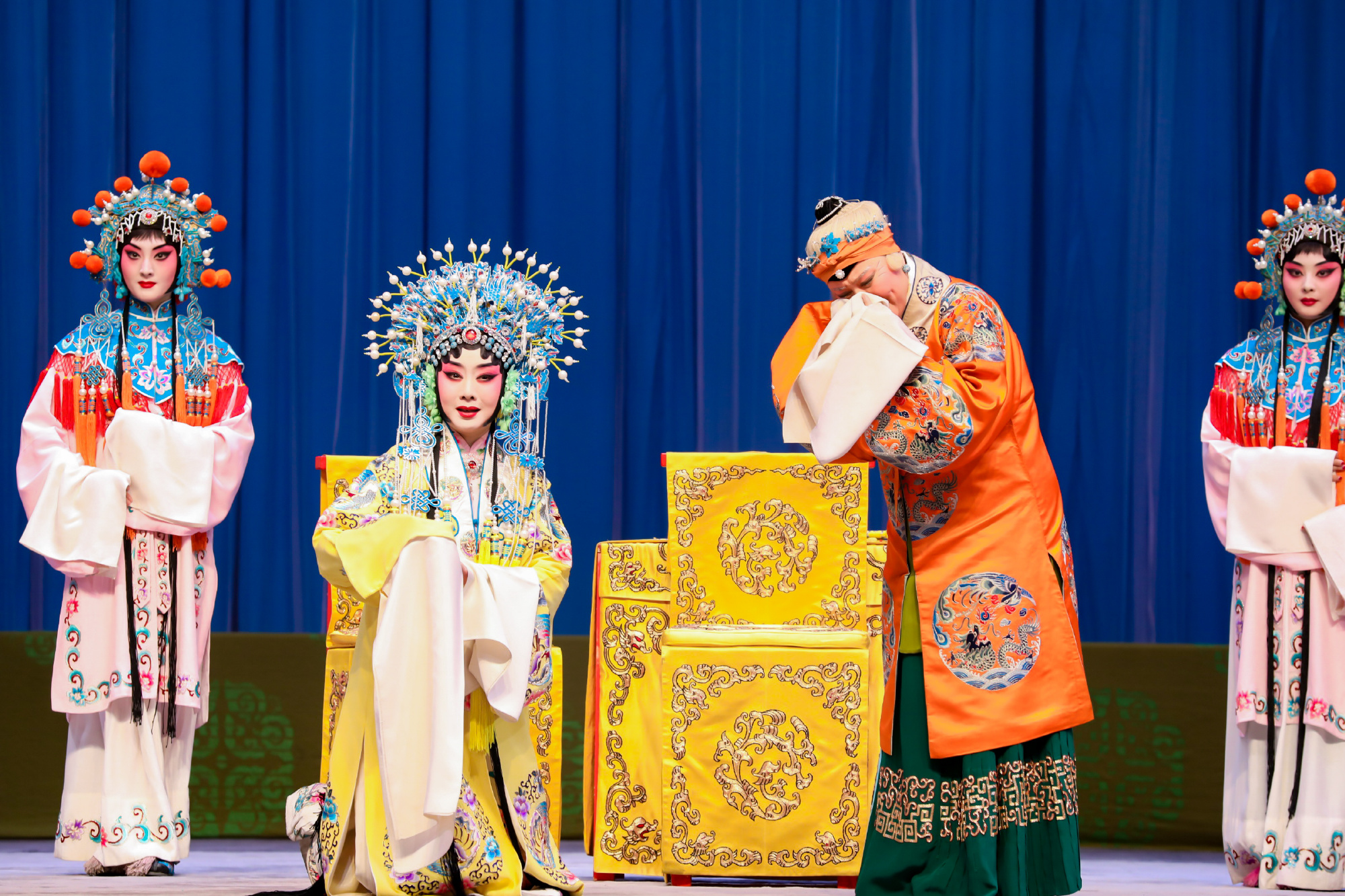
《龙凤呈祥》剧照
A still from Twin Bliss
在往期,京剧文化之旅带大家一起了解过京剧服饰、脸谱、头饰等人物造型的艺术魅力,今天就让我们一起走进京剧发型的美学世界。
In the previous episodes, “A Glimpse of Beijing Opera Culture” already showcased the artistic charm of Beijing Opera costumes, masks, and headwear. Today, let’s explore the aesthetic implications of hairstyles in Beijing Opera.
京剧旦角的发型特点
Hairstyles of Female Characters in Beijing Opera
旦角人物的发型大体可以分为传统大头、旗装头和古装头三种。
The hairstyles of female characters are roughly divided into three categories: traditional hairstyles, Manchu-style hairstyles, and classical hairstyles.
传统大头:
Traditional Hairstyles
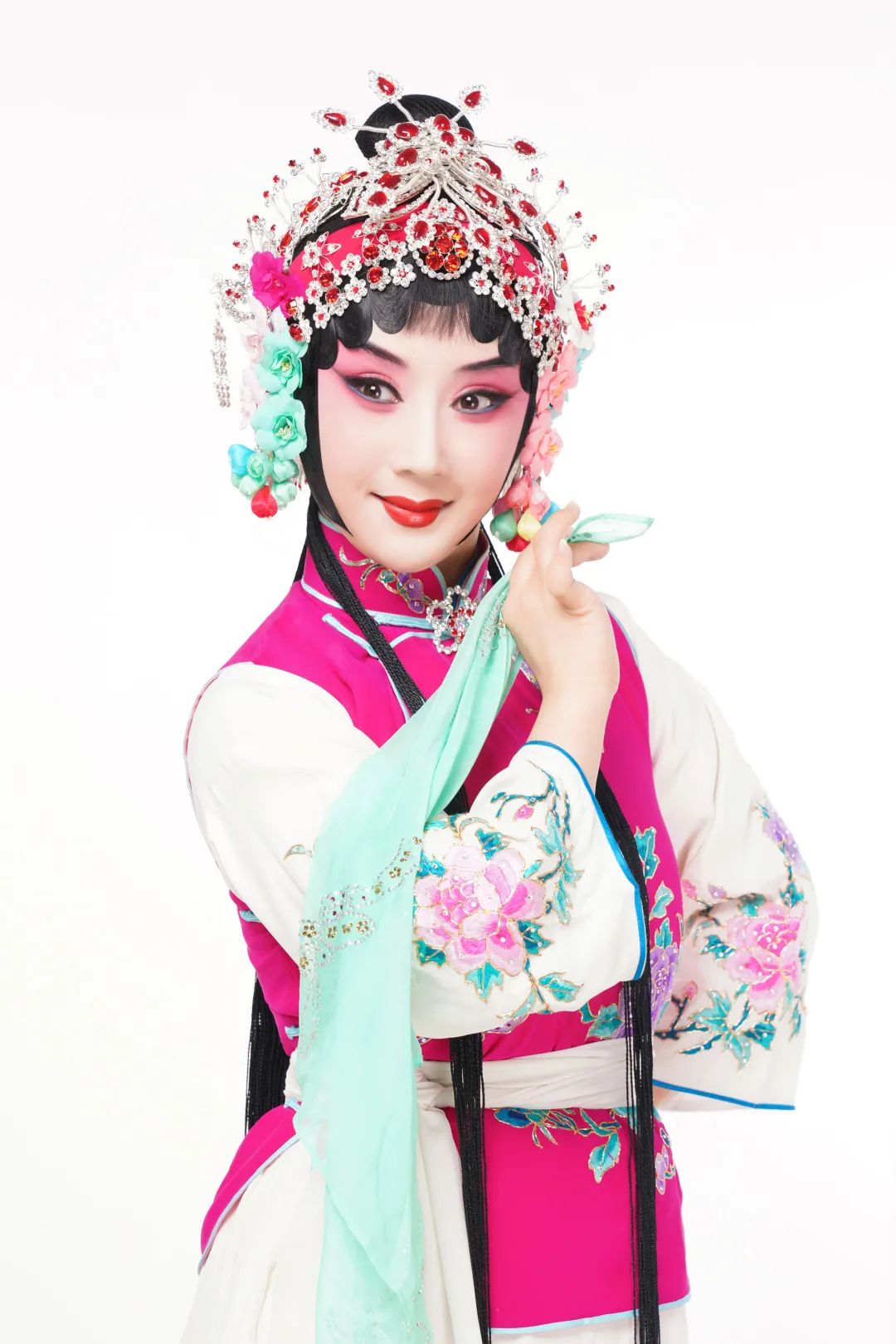
《花田八错》 春兰
Chun Lan, a character in Fated Mistakes
传统大头是京剧中最常见的旦角发型,它的样式很像明清时期妇女的头型。其样式是沿着上额贴若干假发做成的“小弯”,两鬓贴“大缕”片子,括出俊美的脸型。脑后梳椭圆形发纂儿,下缀数尺长黑色丝穗,名为线尾子,表示乌发垂肩、光头净面,格外端庄秀丽。未婚少女、侍女丫环则在发纂上梳一倒抓髻,下留辫穗,表现天真活泼。
Traditional hairstyles are the most common for female characters in Beijing Opera, which model after the hairstyles of women in the Ming (1368-1644) and Qing (1644-1911) dynasties. This kind of hairstyles features small curvatures made of wigs on the forehead and two strings of decorative jewels on both temples, thus highlighting the beautiful face. There is an oval chignon behind the head, with black silk tassels called Xiaweizi drooping as long as a meter, symbolizing shoulder-length black hair. The actress often applies light facial makeup and looks particularly graceful and beautiful. Those playing maidens or servant girls usually have a reversed chignon and braids behind, which look innocent and lively.
旗装头:
Manchu-style Hairstyles
旗装头是传统京剧中少数民族女子的发型,它的样式与清代贵族女子的发型相近,专与旗装相配套。旗装头的发髻作横长式,呈一字形,旧时称两把头或一字头。
Manchu-style hairstyles are often used for characters from ethnic minorities in traditional Beijing Opera plays. They are similar to the hairstyles of aristocratic ladies of the Qing Dynasty, and are often accompanied by Manchu-style costumes. The chignons of Manchu-style hairstyles are straight and flat, which were known as Liangbatou or Yizitou in ancient times.
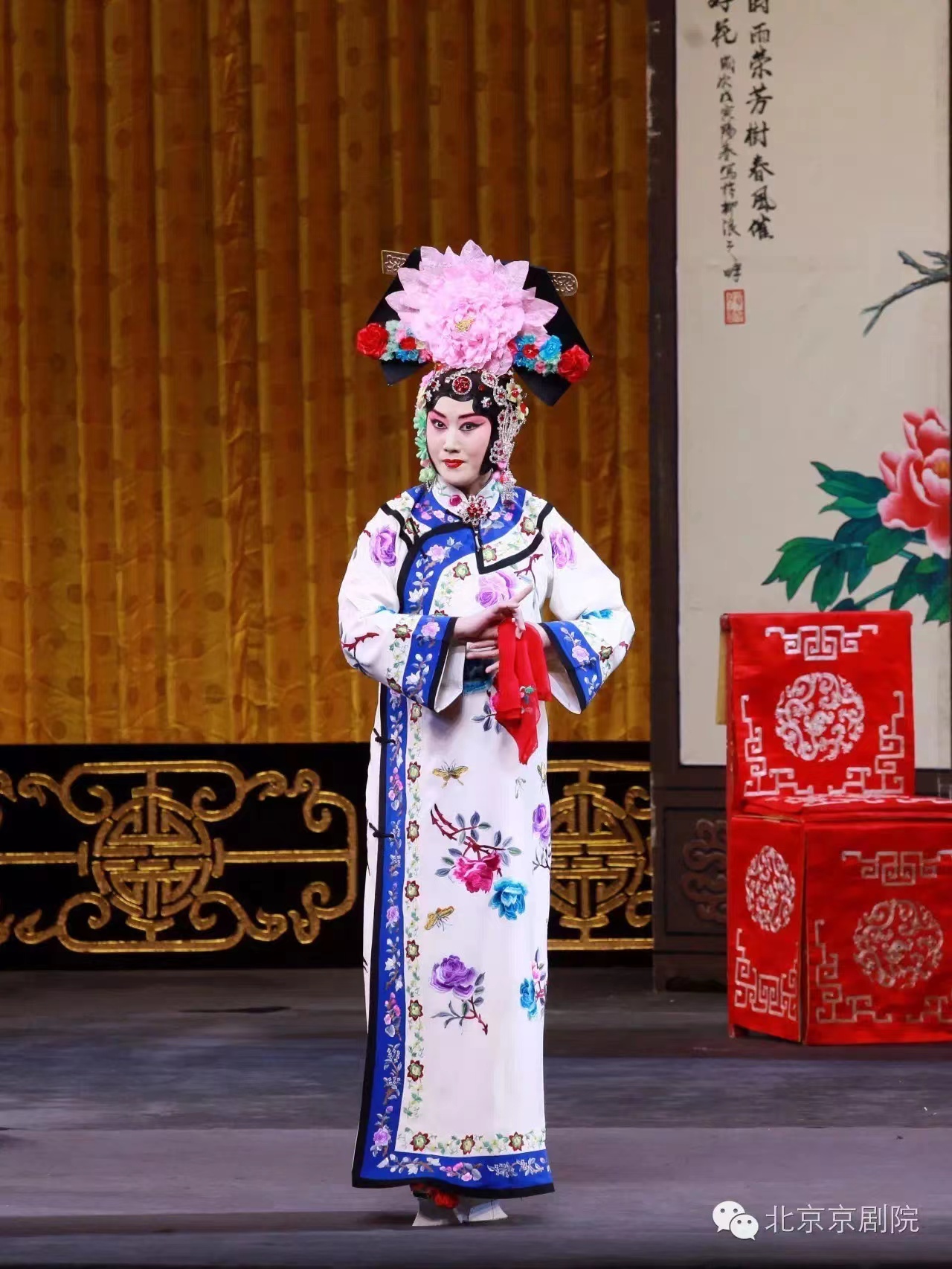
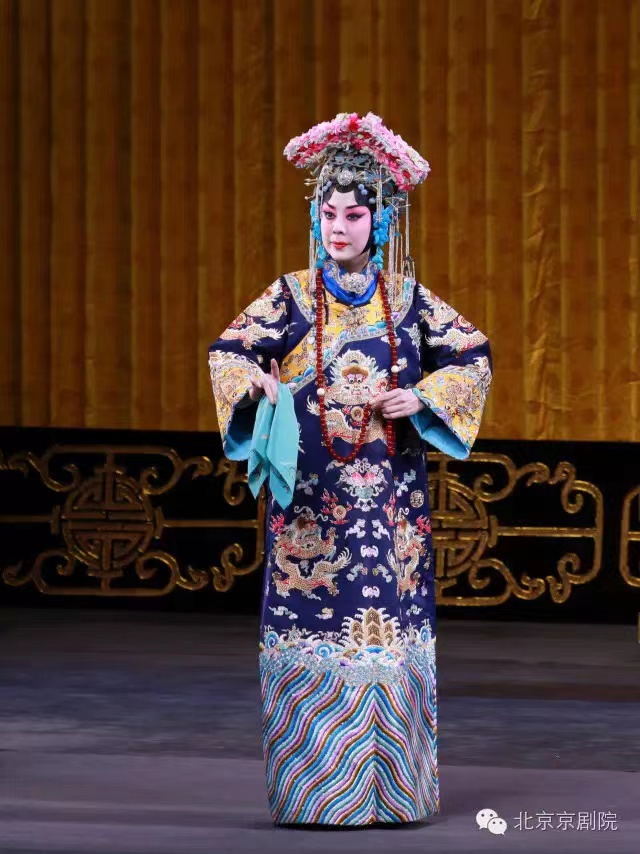
《四郎探母》铁镜公主(左)萧太后(右)
Princess Tiejing (left) and Empress Dowager Xiao (right) in Yang Silang Visits His Mother
旗装头按剧中人物的身份、地位分为三种:
Manchu-style hairstyles are divided into three sorts according to the identify of characters:
一是身份较高的人物,如《四郎探母》剧中的萧太后或新编历史剧中的慈禧太后梳旗头垫子。
First, Dianzi for aristocratic characters with a relatively upper social status. For instance, Empress Dowager Xiao in Yang Silang Visits His Mother and Empress Dowager Cixi in modern Beijing Opera plays both wear Manchu-style hairstyles called Toudianzi.
二是身份较低的人物,如《四郎探母》剧中的铁镜公主、《大登殿》剧中的代战公主,都梳两把头。
Second, Liangbatou for aristocratic characters with a relatively lower social status. For example, Princess Tiejing in Yang Silang Visits His Mother and Princess Daizhan in Enthronement both wear Liangbatou.
三是平民百姓或被贬低身份的妇女,则梳旗头坐子。
Third, Zuozi for common or demoted women.
古装头:
Classical Hairstyles
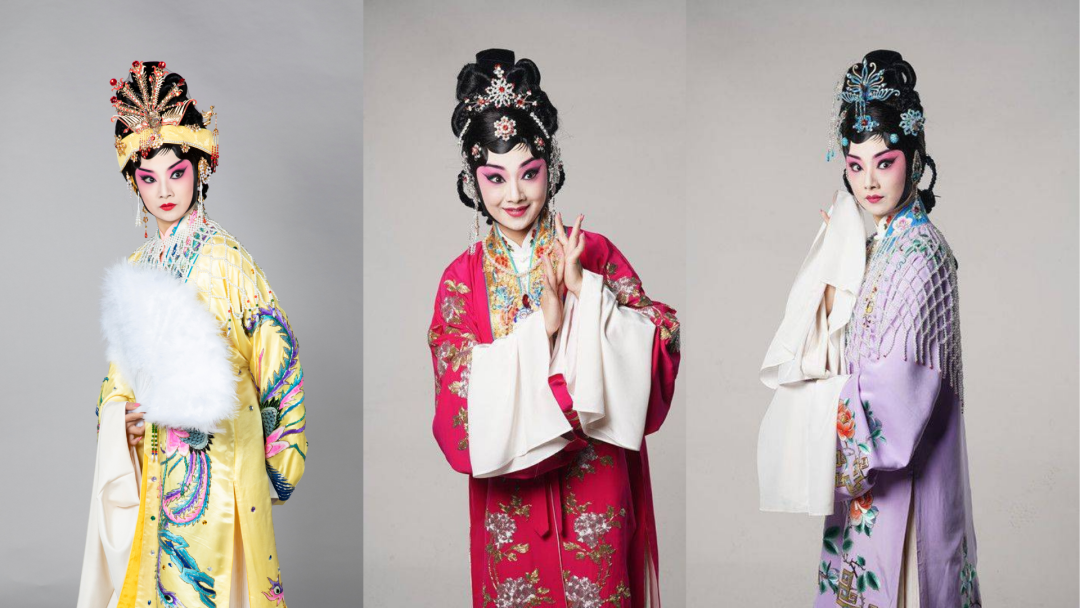
《王熙凤大闹宁国府》人物照
Characters in Wang Xifeng Causes a Havoc in the Ning Mansion
古装头是梅兰芳在编创古装新戏时采用的,借鉴了唐代绘画中仕女的头部造型,创造出更加接近古代生活里妇女发式原型的古装发型。这种古装头造型新颖飘逸,发绺不梳在脑后,有的梳在头顶部的正当中,有的偏向一侧,有的分别梳在荫边,形成“吕”字形,或“品”字形,发髻上插戴的头饰也更为雅致、大气。
Classical hairstyles were first adopted by Mei Lanfang when he played in a revised version of a historical Beijing Opera play. This kind of hairstyles draws inspiration from the hairstyles of ladies in Tang Dynasty (618-907) paintings, based on which hairstylists created hairstyles closest to that of ancient women. It looks novel and unrestrained. Instead of behind the head, the tresses are placed in the middle of the forehead or on either side of the head, forming a shape like the Chinese character “Lü” (吕) or “Pin” (品). The headwear decorating the chignon is more elegant and impressive.
表达人物特点的京剧发型
Hairstyles Used to Present Characterization in Beijing Opera
水发:
Water Wigs

《野猪林·白虎堂》 片段
A still from the act “Hall of White Tiger” in Wild Boar Forest
水发是用于生、净、丑各行当角色头部化装的假发,演员在表现剧中人物的慌张、惊惶、绝望、疯狂等各种情绪时,或表示披头散发、丢盔卸甲、蓬头垢面的一些形象时,均戴水发,因常有将长发连续甩动的表演,故常误呼为“甩发”。如《斩马谡》中,马谡在被问斩之前,《刺王僚》中,专诸在行刺时,都戴水发,表现他们即将赴难的神态。
Water wigs, known as “Shuifa” in Chinese, are worn by male, female and clown characters to express emotions like fluster, panic, despair, and madness, or portray characters with disheveled hair, a dirty face, and disarrayed armor. In the case, characters often sway the long wigs, hence this kind of hairstyle is often mistakenly called “Shuaifa” (meaning “swaying hair). For instance, General Ma Su before he was executed in Killing of Ma Su and Zhuan Zhu before he set out for an assassination mission in Assassination of Wang Liao both wear Shuifa to imply their state to be killed.
发鬏,又称发髻:
Chignons:
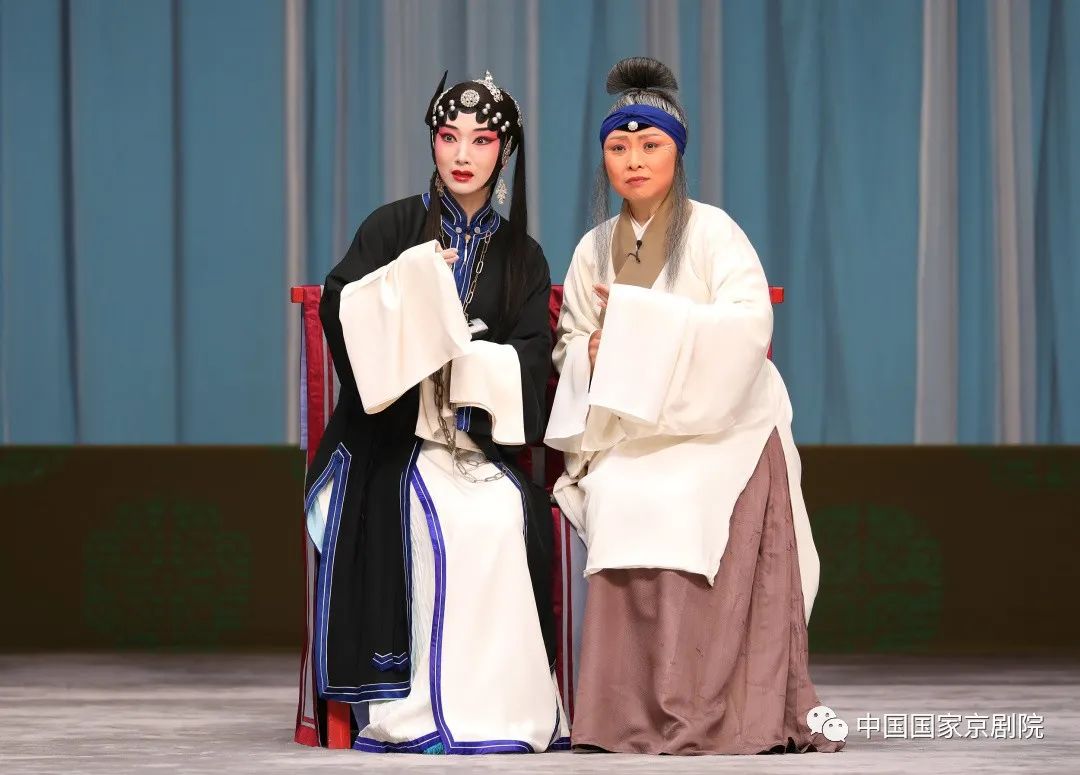
《六月雪·探监》 蔡母(右)
Cai’s Mother (right) in the act “Jail Visiting” in Snow in June
牦牛毛制成,底座为一铜圈,四周束以假发,取中理顺,分成三组:一组扎成蓬松的发团,呈半圆形凸出于头顶,一组披散脑后,作为发尾,另一组是左右各分出一绺,用作鬓发,垂于耳际。用时戴在网顶,头部四周用水纱扎紧。
This kind of chignons is made with yak hair fixed on a copper loop, which is arranged into three groups: one is a semicircular ball of fluffy hair on the top of the head, one is separately distributed behind the head, and the rest is divided into two parts on the temples that droop behind the ears.
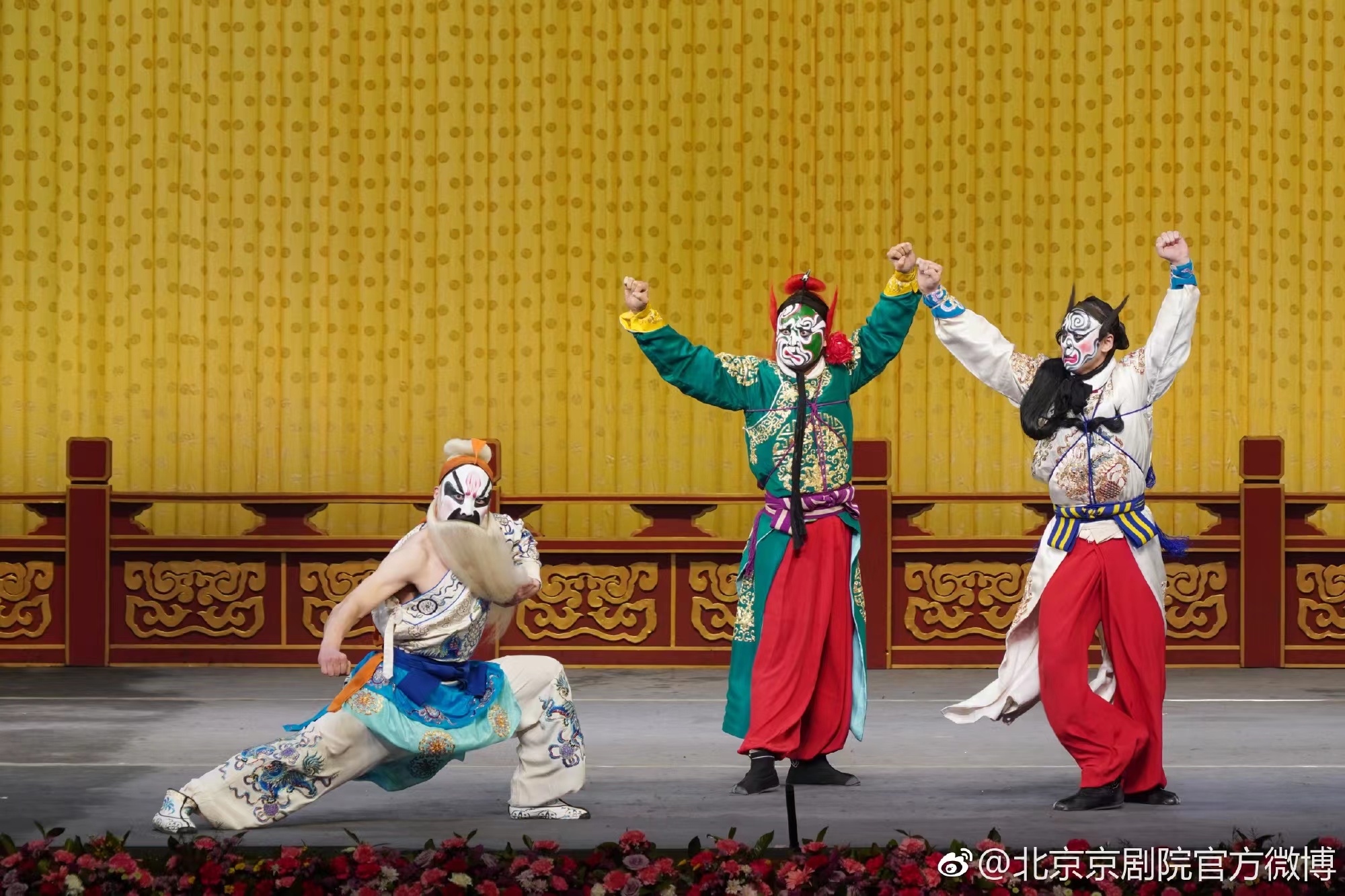
《龙潭鲍骆》剧照
A still from Bao and Luo in Longtan
发鬏有白、灰、黑、红四色。白、灰色发鬏为老年男女角色用,是年迈的标志。黑色发鬏一般为性格粗鲁的净行扮演的中青年角色或神话剧中的大妖所用。外貌怪异,戴红色髯口的角色,须戴红发鬏。戴黑、红发鬏的人物,均须配插同色的耳毛子。
The chignons are usually in white, grey, black or red. White and grey chignons are worn by old characters, indicating their old age. Black chignons are for young and middle-aged characters who are rude or powerful demons in mythical plays. Oddly-looking characters wear red chignons and beards. Those who wear black or red chignons need to wear ear wigs of the same color.

